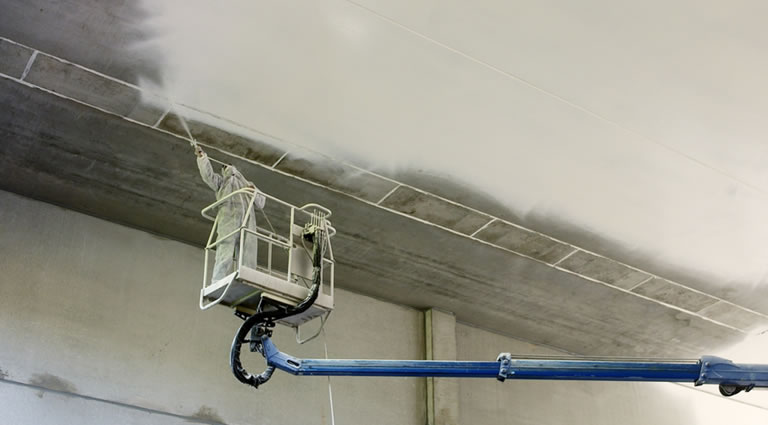 High pressure spraying of material under pressure (the so-called. combined shower):
High pressure spraying of material under pressure (the so-called. combined shower):
With combined high-pressure spraying, the material is compressed to pressure by a pneumatic piston pump 40-50 bars and pressed into the gun. The material is coarsely atomized as a result of the pressure drop after exiting the spray nozzle, after which – under the action of air supplied through the pipes on the nozzle – in hypertension 1 the barium is sprayed finer.
What are the advantages of a combined high pressure airless spraying machine compared to a conventional airless spraying machine??
With combined high-pressure spraying, better dosing of the sprayed material and better coating quality are achieved, especially in the case of painted surfaces. By using this method, an even coating on the profiled surfaces is easily achieved.
How electrostatic spraying works?
In this method, during spraying, the particles of the sprayed material are negatively charged by a constant voltage of max. 70 000 Volts and intensity 0,0002 A. Because the objects to be coated are charged in the opposite way due to grounding, an electrostatic field is generated during spraying. In this field, the varnish particles travel to the workpiece and adhere to its surface. For small objects, the electrostatic field covers the entire body, which allows them to be coated by spraying on one side.
What does the term "electrostatic bypass" mean?
Electrostatic bypass is created by electrostatic spraying of small circumference objects. Spray material, wandering in the electrostatic field, also reaches the opposite surface of the workpiece.
HVLP guns are increasingly being used in high-pressure spraying.
HVLP (The. high volumen Iow pressure) stands for a low pressure system with low spray material dispersion. In such a spray gun, air flowing in from the compressor (about pressure olc. 4,5 only) is converted into a pressure of max. 0,7 only. Depending on the type of material being sprayed, its atomization is reduced by approx. 30%. This has the following advantages:
1) material saving (do 20%);
2) less cleaning effort;
3) less environmental pollution;
4) less dispersion of the sprayed varnish;
5) less filter wear.